Whether you're using your Ford Transit cargo van for business or for recreation, you may need more than the two seats that come standard with the vehicle. Perhaps you'd like to be able to seat a small team of employees and their work materials. Or maybe you take the van on camping trips and need room for passengers and lots of cargo. You may be wondering whether you can modify your van to add more seats. We've done the research, and we have the answers for you!
You can add seats to your Ford Transit cargo van. In fact, Ford has a network of approved upfitting shops that can add seats to your Transit. You can also work with an upfitter, not within Ford's network, to customize your Transit cargo van's seating exactly the way you want it.
A caution, though: make sure that your new seats meet all federal and state safety standards, and check with your insurance company to ensure that your policy will cover passengers in the new seats in the event of an accident.
In the remainder of this article, we'll describe the three ways you can get new seats added to your Ford Transit cargo van. We'll also alert you to the dangers of doing this work yourself. And we'll explain the differences between cargo vans and passenger vans and tell you whether you can convert a cargo van into a passenger van. Keep reading to learn more!
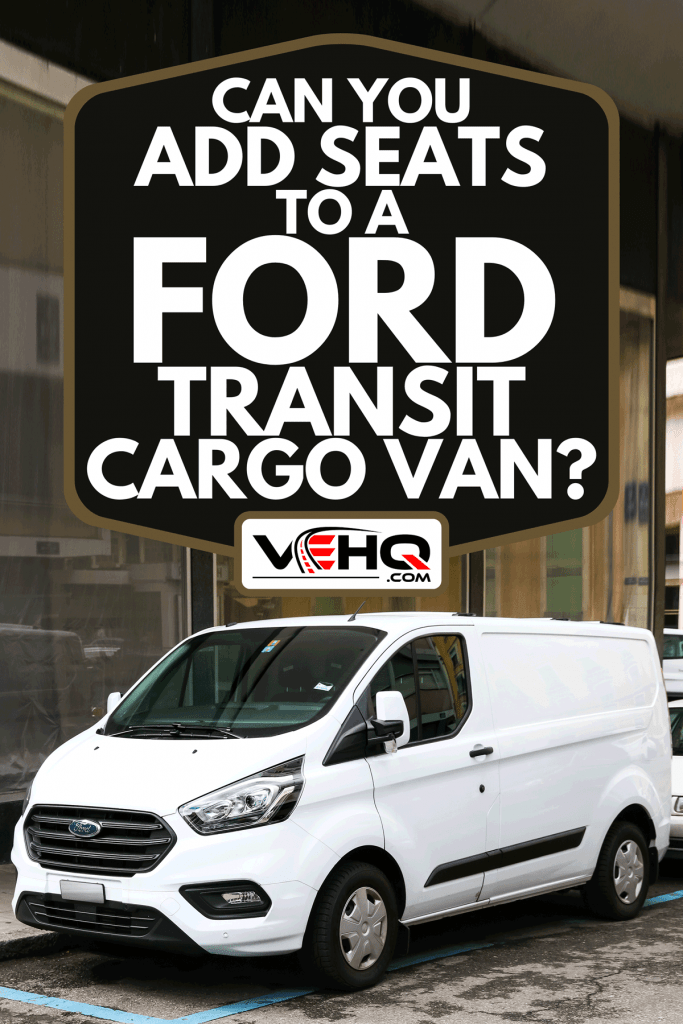
Can You Add Seats To A Ford Transit Cargo Van?
The Ford Transit cargo van comes with just two seats — front bucket seats for the driver and a passenger. The rest of the van's space is intended for transporting cargo. However, it is possible to modify your Ford Transit cargo van to include additional seating.
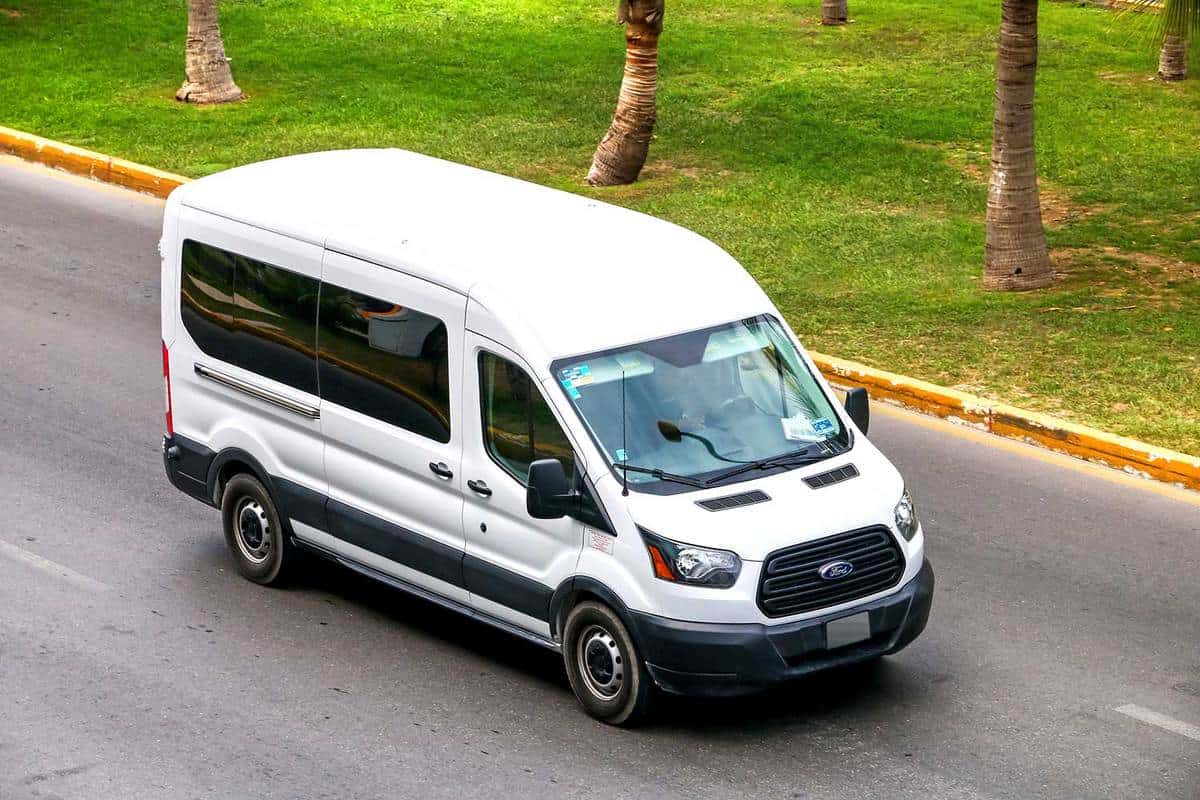
Who Can Do The Work?
If you're buying new, your dealer can upfit your Transit cargo van with additional seats before you take delivery. If you already own your van, you can take it to an aftermarket upfitter or even modify it yourself. However, especially if you plan to do the work yourself, be aware that this is a complex job with major implications for both passenger safety and insurance coverage.
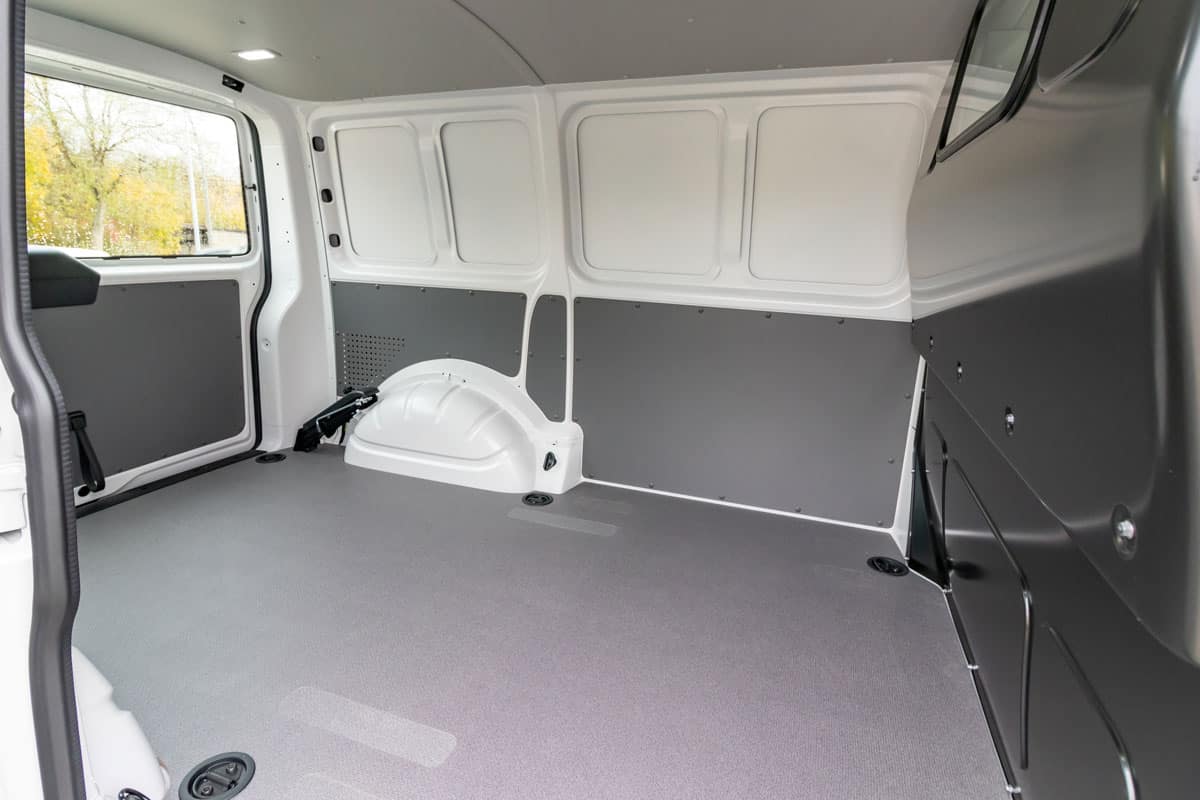
Dealer Upfitting Before Delivery
If you're buying your Ford Transit cargo van new, you can usually arrange with your dealer to install a second row of seating before you take delivery of the van. This upfit costs around $900.
There are several advantages to this strategy:
- You can roll the extra cost into the total vehicle price and thus into your monthly payment rather than paying up-front.
- Your dealer understands all the complex factors — such as side-impact airbag placement, the need for shatter-proof windows, flammability of the seat materials, and many others — that must be addressed when upfitting a Transit cargo van.
- Because your dealer stands behind the work, you can be assured that the new seating will be properly installed and safe for your passengers.
- All — or nearly all — insurance companies will cover injuries sustained by second-row passengers if you should have an accident.
The major disadvantage to having your dealer install the second row of seats is that you'll have only one option: a three-person bench seat. If you prefer individual, captain's chair seating in the second row, you should plan on having the seats installed by an aftermarket upfitter after you purchase the van.
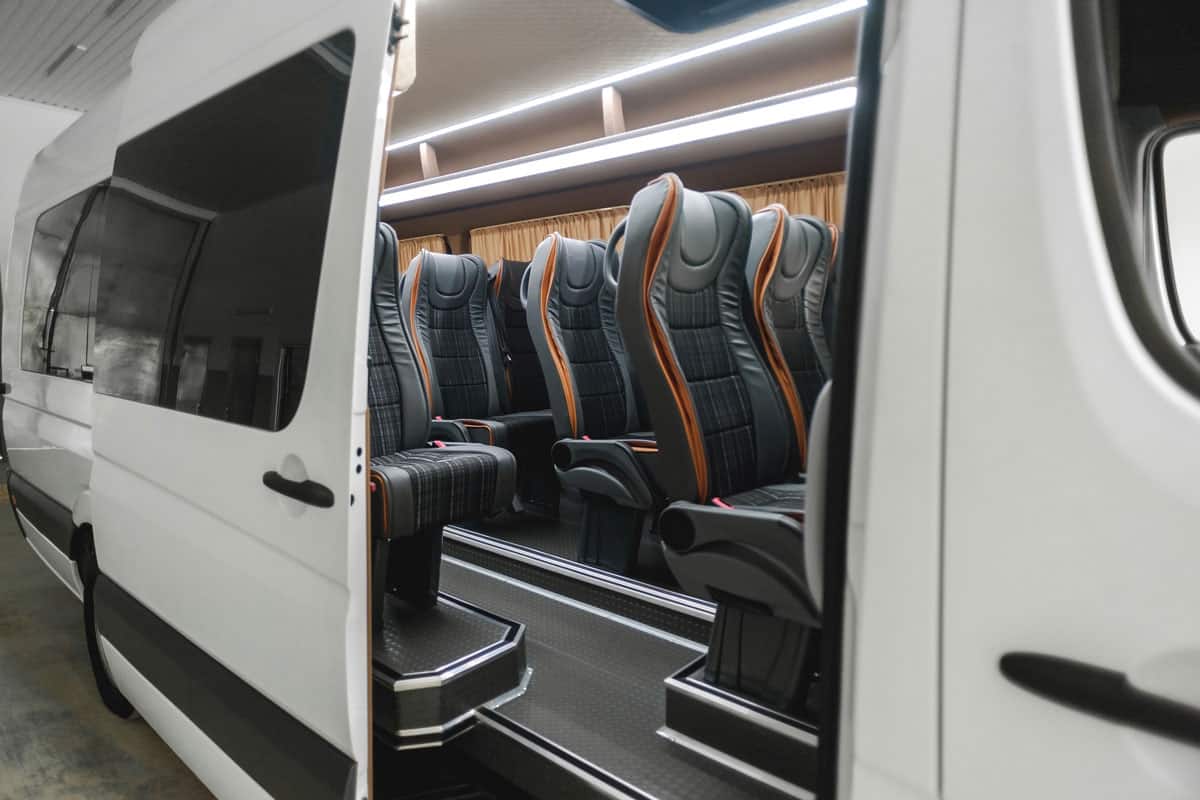
Aftermarket Upfitting
If you already own your Transit cargo van, you can go to an aftermarket upfitter to add seats. The Ford Motor Company devotes an entire section of its website to upfitting its vehicles. You can compare various seating options and even search for a Ford-approved upfitter near you.
Advantages to using a Ford-approved aftermarket upfitter include:
- Confidence that their high-quality work meets federal and state safety requirements.
- Your insurance company will probably cover the added seats in the event of an accident. But check with your insurance carrier prior to having the new seats installed.
The major disadvantages are:
- Ford-approved upfitters will only use Ford products specifically designed for the Transit cargo van, so your options will be limited.
- These shops tend to charge more than non-network shops but less than dealerships.
If you want more flexibility in the type or placement of your new seats, seek out an upfitter that's not part of the Ford-approved network. These shops can install virtually any type of seating to meet your specific needs in a wide variety of configurations.
A word of caution, though: you should carefully research the quality of a non-network upfitter, to ensure that their finished product will meet all federal and state safety requirements. Talk with your insurance agent to confirm that your policy will cover passengers in these seats in an accident.
Self Upfitting
If you have a moderate level of mechanical experience, you can add seats to your Transit cargo van yourself. This allows you to upgrade the seating without the added cost of taking it to a professional upfitter.
How Can I Add Seats to my Cargo Van?

The job is fairly simple if you use standard Ford Transit seats and mounting brackets because the threaded holes for mounting the seats are already drilled into the floor. And, as long as you use exactly the same equipment that your Ford dealer or in-network upfitter would use, you can be confident that you won't unintentionally block the deployment of an airbag or install a cargo-passenger partition that will buckle if the vehicle rolls.
On the other hand, if you choose to add non-standard seats, you face a number of barriers. You will have to drill through the floor of the van and devise your own anchoring system for the seats and safety harnesses. This requires specialized tools and advanced mechanical knowledge. You should also examine your vehicle's specs and diagrams to ensure that your upfit doesn't compromise existing safety features.
Your insurance policy may not cover self-installed seats, even if you use factory-standard parts and adhere to all safety guidelines.
Click here for this Transit seat swivel base on Amazon.
What Is The Difference Between A Cargo Van And A Passenger Van?
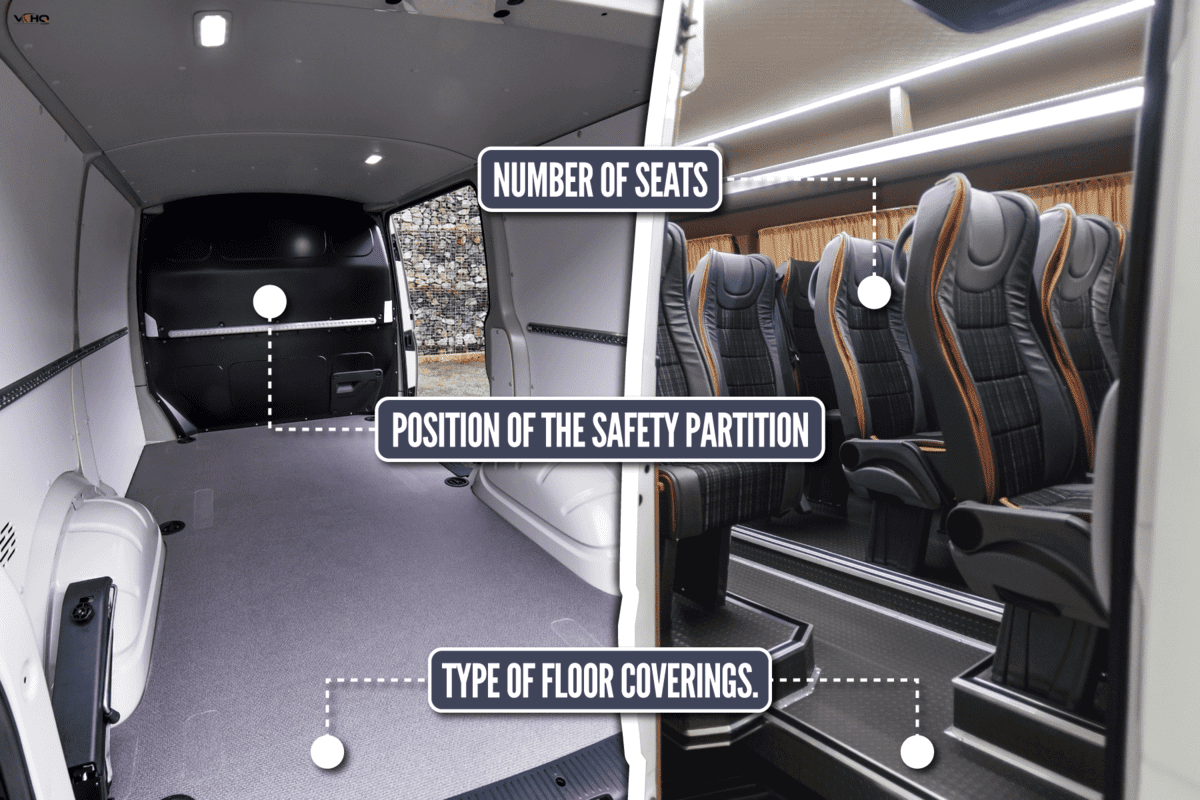
There are three major differences between cargo vans and passenger vans: the number of seats, the position of the safety partition, and the type of floor coverings. Cargo vans typically come with just the driver's seat and one front passenger seat. A partition separates the seats from the cargo in the back section of the van. While the floor of the seating area may have carpet, the cargo section generally features rubber flooring.
A passenger van, on the other hand, boasts seating for up to 10 people. The driver and front passenger have individual bucket seats. The second- and third-row seats can be benches, individual buckets, or a hybrid of the two. The passenger van has relatively little cargo space; however, it still requires a partition between the seating and cargo areas. Most passenger vans have carpet throughout.
Crew Vans
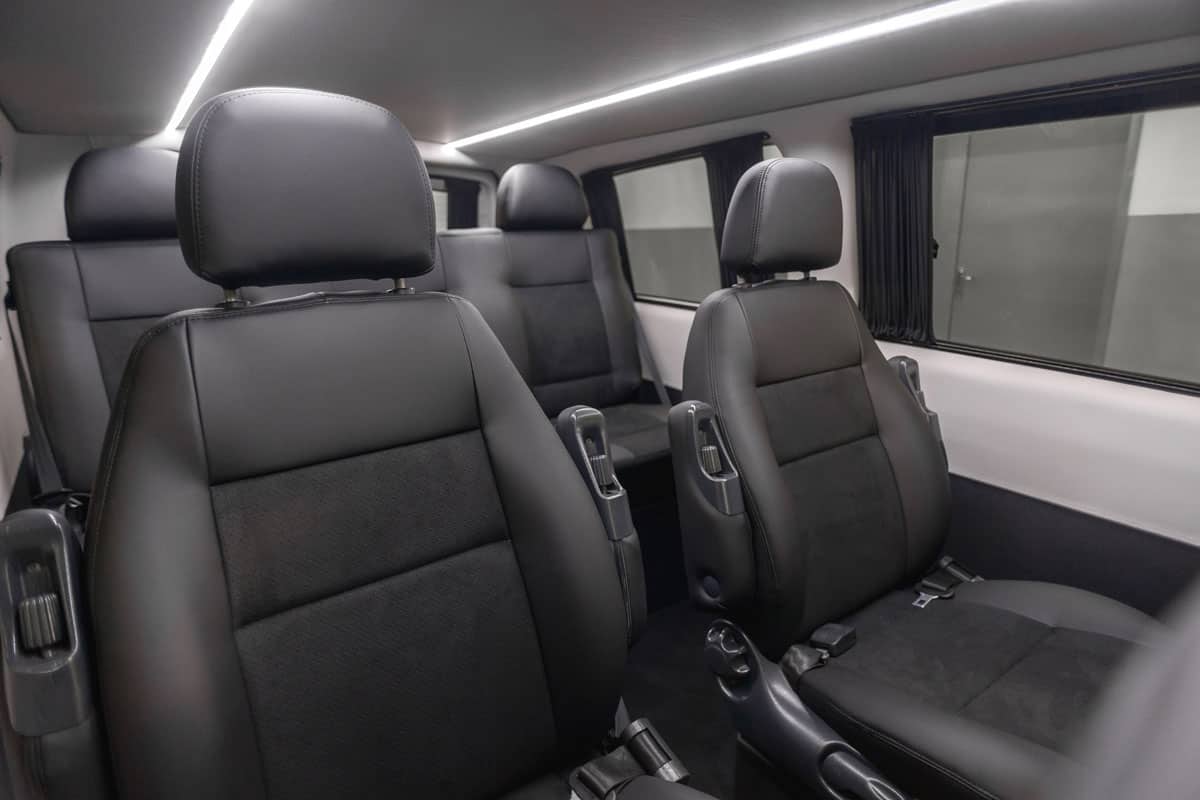
In recent years, some manufacturers have developed crew vans, which carry up to five people and still have relatively large cargo spaces. Crew vans have front driver and passenger bucket seats, plus a three-person bench in the second row. A safety partition behind the second row separates passengers from payload. The floor covering is carpet in the passenger area and rubber or metal in the cargo space.
The Transit provides an example of the basic similarity of cargo, crew, and passenger vans in the same line. All four models — Cargo Van, Crew Van, Passenger Van XL, and Passenger Van XLT — feature the same chassis and engine. As we mentioned above, the cargo and crew models actually have the holes for second- and third-row seat brackets and bolts drilled in them. They simply don't have as many seats installed as the Transit passenger vans do.
Can You Turn A Cargo Van Into A Passenger Van?

While converting a cargo van into a passenger van is possible, it's not a simple task. The seats must be anchored securely to the vehicle's frame so they will withstand the force of a crash. Drilling into the body of the van requires specialized tools and advanced mechanical knowledge.
Additionally, you must install seat belts that are similarly secure. If you leave cargo room in the rear, you must install a partition between the cargo and passenger areas.
There are many other factors to take into account, as well. For example, you must have an emergency exit at the rear or through a large window. Also, any windows in the passenger area must be shatterproof. And you must take into account where the vehicle's existing airbags are and whether the new seating arrangement compromises their effectiveness.
The only instance in which it's fairly simple to turn a cargo van into a passenger van is when the vehicle manufacturer makes both types of vans with a single chassis model. The Ford Transit is an excellent example of this: you can simply add factory seats, using factory brackets and bolts to secure them in the pre-drilled holes that already exist in the floor of your Transit cargo van.
In Closing
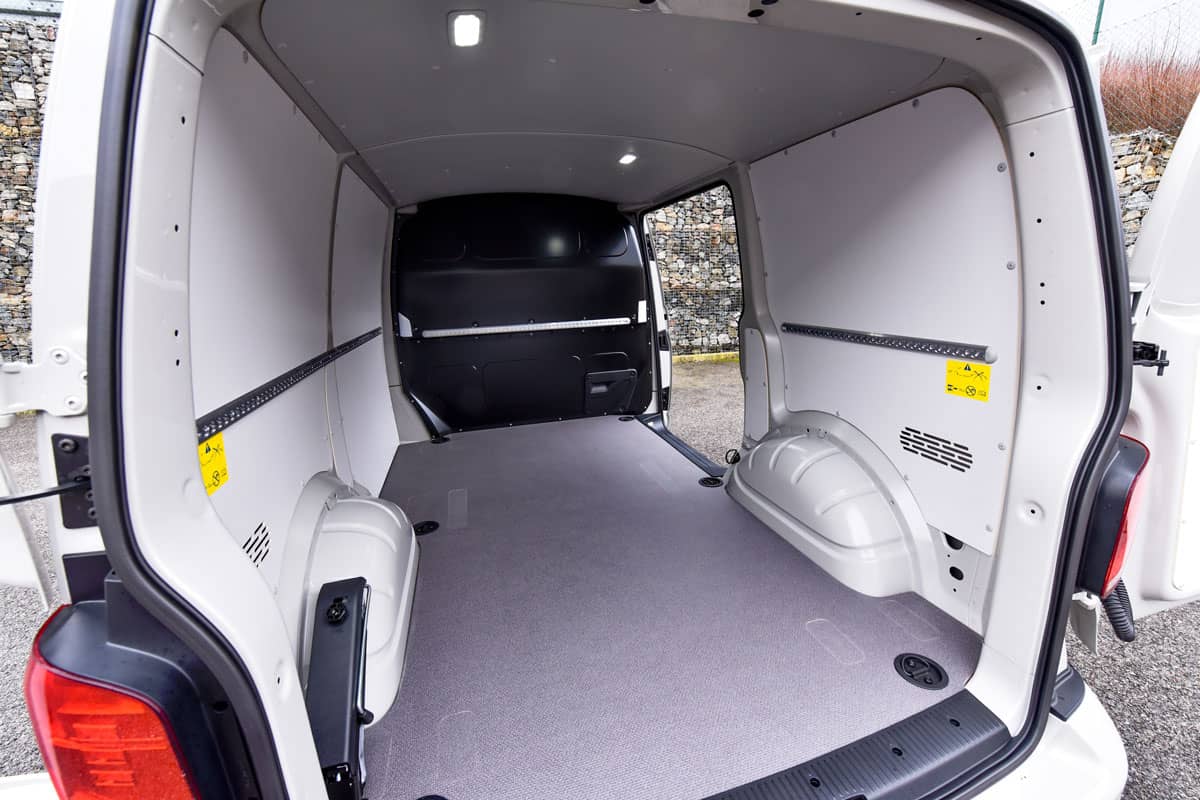
Adding seats to your Ford Transit cargo van may provide you with a way to transport a small work crew, or a group of camping buddies, along with substantial cargo. But don't undertake this upfitting job lightly: when it comes to vehicle seating, safety is the top priority.
It may be well worth the extra time and money involved to have this job done by professionals. Afterward, you can enjoy your Ford Transit for years to come!
You may also enjoy:

